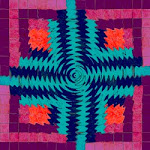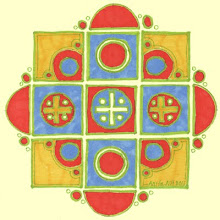
Here's another advertisement from the August 1944 issue of Popular Mechanics. What can you read in this finger print? There is a secret hidden in it, just as there is in every finger print.
Study the advertisement from the Institute of Applied Science above and you will see the answer: Your Fortune. The words appear twice.
Learn about the History of Fingerprinting and read two books of historical interest on the Internet Archive: Francis Galton's 1895 publication Fingerprint Directories and James Holt's Fingerprints Simplified published c.1920.
The first London printing of Galton's book Finger Prints published by Macmillan in 1892 is commanding the whopping price of $1,500 on Biblio.
































